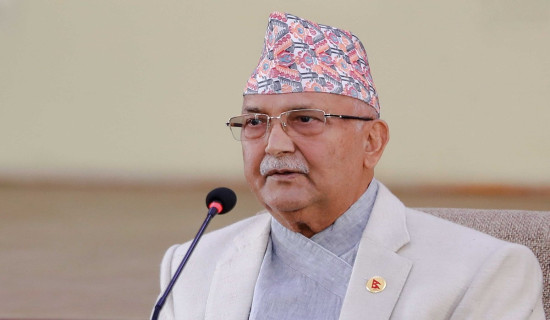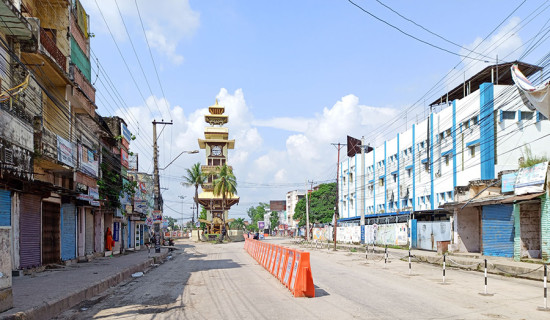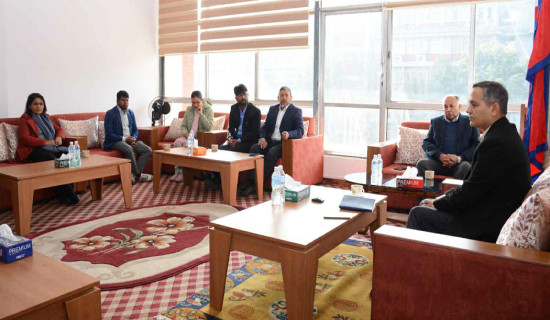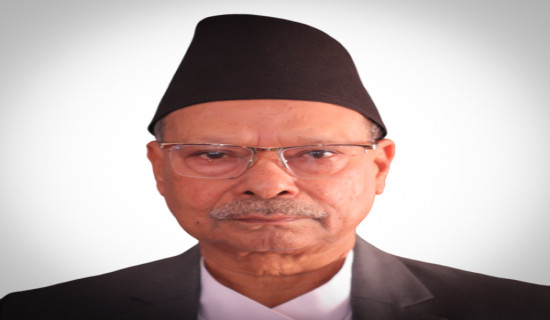- Monday, 5 January 2026
Protecting Nepal’s cultural heritage for continuation of world civilization
Yugang Fu, Kunfang Zheng and Wei Du
The Indian Ocean winds stop at the edge of the world’s roof as they blow across the ocean. Nestled inside the Himalayan range that spans the plateau, Nepal is the Mani jewel of human civilization. It is a land of snow-capped mountains, peaks and foothills. Wickerwork, roots and human footprints like starbursts have been dispersed around the earth since the first humans left Africa to build a magnificent civilization of light. More than 130 ethnic groups have thrived and coexisted in Nepal, the corner of Asia, from the colorful and powerful Gurkha swords to the complex wood carvings of the Newars, the vivid thangkas of the Sherpas, and the somber Buddha statues of the Sakya.
The traditions and artistic expressions of different ethnic groups have merged to produce the flame of civilization’s treasures. Cultural heritage is the unique stamp of human communities that extends back to the present day. Nepal’s cultural legacy also reflects the evolution of human religions. Following Prince Siddhartha’s journey from Nepal over 2,500 years ago to spread Buddhism, the ancient wisdom began to illuminate Asia’s mountains and seas. In East Asia, Zen Tantra depicts the breadth of the Buddha’s teachings; in Southeast Asia, Theravada Buddhism pays homage to the deeds of the World Honored One. The origin of all this, the Lumbini Garden in Nepal, the site of the Buddha’s birth, has been silent and unchanged for thousands of years, combining the knowledge and experience of civilization into one timeless form. Moreover, the interchange and blending of Buddhism and Hinduism in the Kathmandu Valley, with its patchwork of palaces and buildings, has enabled this World Heritage Site to demonstrate the resilience and inclusivity of Asian civilization.
The snow-covered Tibetan
Buddhist plateau extends from the Kathmandu Valley to the north, while a
bird’s-eye view of South Asia reveals Hinduism’s belief in an omnipotent sky
god. Various styles and beliefs flow through the valley, the sacred towering
Boudhanath stupa and the golden splendor of Pashupatinath temple. The trek is
replete with the compassion and sustenance that human civilization offers to
the masses. Additionally, culture serves as a link between historical
civilizations and the present. The sarangi plays a melody while the mask dance
provides an intense spiritual experience in different festivals in Nepal. The
dancing and music of these festivals contain the codes of how humanity joined together
and became civilized during the transition from group to society. They
accompany the development and expansion of civilization, having been born amid
the darkness and deluge of humanity.
Nepal’s cultural heritage is not only a source
of pride and identity for its people but also a valuable asset for the
continuation of world civilization. It represents the diversity, creativity and
harmony of human endeavors throughout history. Protecting and preserving
Nepal’s cultural heritage is not only a responsibility but also a necessity for the sake of humanity’s future.
The material and spiritual aspects of human
civilization leave their mark on cultural heritage, which functions as a
mirror. As we stand here in the present, it is also the thread that connects
the past, present, and future. However, Nepal’s cultural heritage has suffered
various degrees of damage owing to the earthquakes, particularly the 2015 earthquake. After the earthquake destroyed
the Changu Narayan temple in the Kathmandu valley, it took a Chinese team five years
to rebuild it. Restoration work is still ongoing at many other cultural
heritage sites, such as the Old Palace, the Swayambhunath Temple, and the
Narayan Vishnu Temple. Not to mention the numerous, priceless, unlisted
cultural heritage sites in Nepal that have disappeared before ever coming to
the attention of the outside world. Preserving Nepal’s cultural heritage is not
only the obligation of the entire human race; it is not only about conserving
artifacts from the past or memories from the past; rather, it is about preserving
the knowledge, identities, and memories that continue to influence our world
both now and in the future. Though they do not use words to communicate,
civilizations have their own voice. Cultural heritage is the outward expression
of human civilization, and its preservation is the preservation of civilization
as a whole.
Despite its small size, Nepal is home to a
richness of monuments and cultural treasures that represents a common wealth
of all the world’s civilizations and a priceless gift of human culture.
Protecting the world’s cultural heritage is especially vital for governments
and citizens in these uncertain times when the Notre Dame fire has not
completely subsided and it is challenging to rebuild the Hofsherr Gardens. In
order to ensure that Nepal, the gem of the Himalayas, continues to shine
brightly for our future generations and the continuation of global
civilization, it is even more imperative that governments and peoples of the
world work together.
(Yugang Fu, Scholar, Institute of Law and
Politics, Yunnan University of Finance and Economics, P. R. China; Kunfang
Zheng, Institute of Law and Politics, Yunnan University of Finance and
Economics, P. R. China; Wei Du, Scholar, Institute of International Relations,
Yunnan University, P. R. China.)









-original-thumb.jpg)
-original-thumb.jpg)

-original-thumb.jpg)
-original-thumb.jpg)

